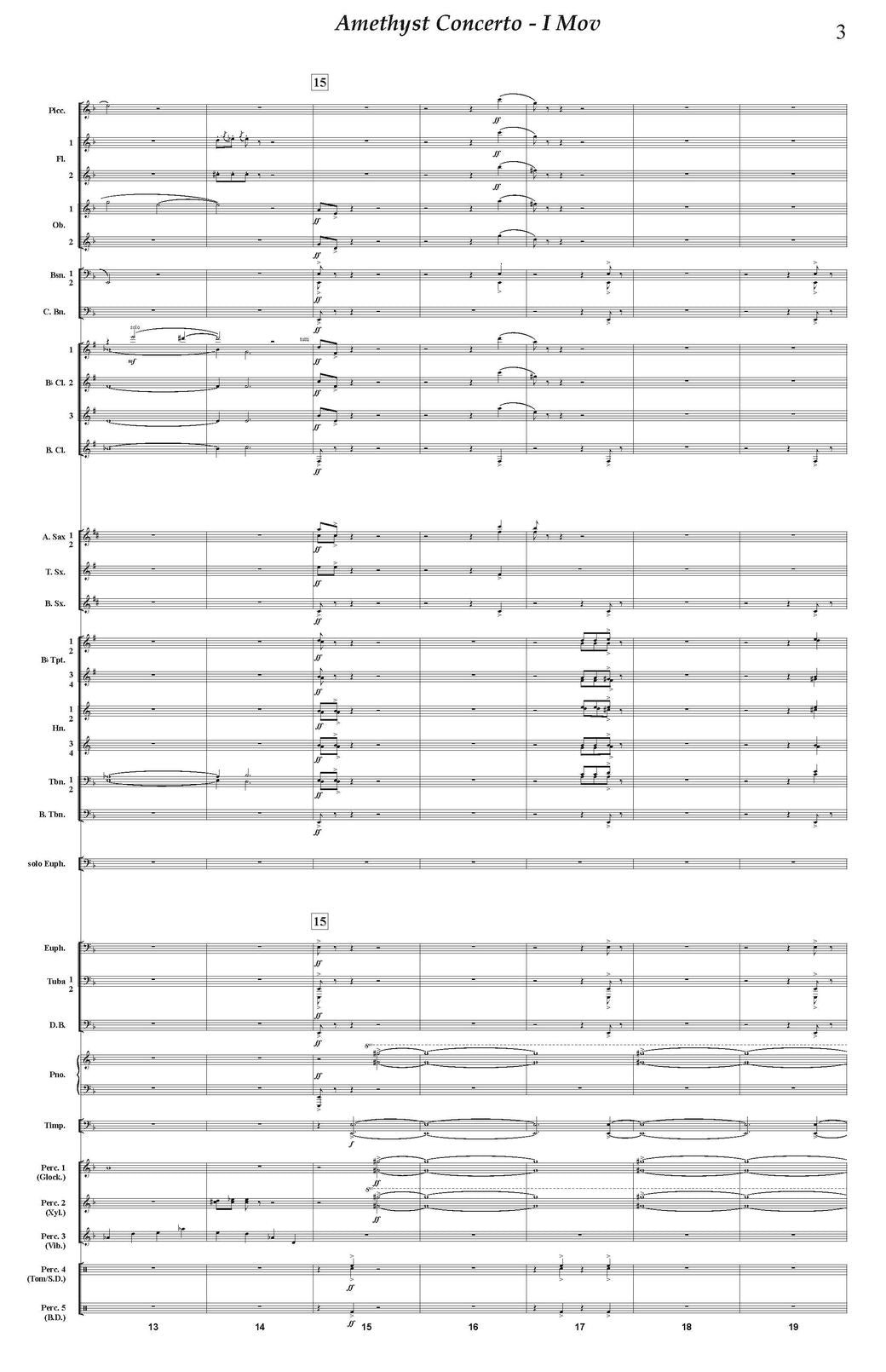My Store
Sebastian Quesada: Amethyst Concerto for Euphonium
Sebastian Quesada: Amethyst Concerto for Euphonium
Couldn't load pickup availability
As the collective entity that our society is, the illusion of our ideas and behaviors is a reflection of accumulated and synergistic thinking. In many ways, we react in accordance to established rules and patterns that contribute to identify ourselves within the society of this era. Although this concept represents an oversimplification of the multicultural approaches that we can perceive throughout the world, it is undeniable that these differences gradually homogenize, destroying intangible meanings that could provide alternative perspectives of our objective and subjective realities. Known cases of people, who apparently have generous intentions and raise the voice against the flaws of a system, only to fail at the end because they were considered social threats, are examples of how those of alternative thinking are separated from the flowing of ideas that the status quo pursues.
The Amethyst Concerto for Euphonium and Wind Symphony attempts to explore these kind of situations through a sonorous landscape in a three-movement work. Taking the literal concept of the concerto genre as a contrast between the parts, the Euphonium´s voice tries to reject what is happening in its surroundings, represented by the Wind Band. The aggressive discourse of the mass in the first movement called "The hidden side of the labyrinth", which can be very persuading and intimidating, contrasts with the initial shy line of the soloist. The Amethyst, a crystal that has been culturally associated as a healer of wounds and that soldiers of the Middle Ages used to carry in battles due to a protecting quality, is represented by a five-note motif (which I call the "Amethyst motif"). This cell, sometimes with variations in rhythm and design, is used throughout the entire piece as a constant presence that accompanies the individual voice (the soloist) in its transforming process. "The Amethyst Perspective", a more meditative movement and built largely with the Amethyst motif, comes to purify and heal the soloist from its wounds. In the final movement "Stream Refraction", the melodic line of the Euphonium has gained more confidence and determination, managing with firmness the intimidating sonority of the ensemble. The Wind Band starts putting attention to the soloist and the piece changes towards a more imitative texture with a brighter character. The once inaudible voice is now bringing a whole new conception of its reality, with new perspectives, different paths and unexpected hopes.
For hard copies of the score and parts for the Euphonium and Band version, please use the contact page.
Sebastian Quesada is a Costa Rican composer interested in exploring the ambiguous and subjective condition of music to suggest particular images. Appealing to a mixture of different genres and processes, his pieces try to address musical narratives related to how we, as social entities, perceive our environment. His openness to collaboration has led him to work in a variety of contexts (from chamber music to rock music, incidental works, arranging, installations, among others), which has contributed in his intentions to synthesize different elements towards extra-musical concepts. His music has been performed by the Harlem String Quartet, Eight Blackbird, the National Symphony of Costa Rica, the Concert Band of Cartago, the Costa Rican Guitar Quartet and others. Among his awards are the first prize of the Barbara Wagner Composition Commission Competition and the runner-up of the Guitar Composition Contest "Promises of the Guitar."
Quesada holds degrees in composition from Michigan State University, Truman State University and University of Costa Rica, as well as a degree in Music Theory from Michigan State University.
Share
















